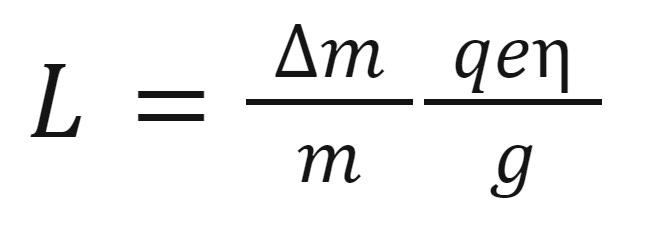Will aviation go electric?
Will Li-ion batteries power electric aviation or is hydrogen a better solution for such an energy-intensive application?
Both the aviation industry and VC’s are sceptical about battery-powered electric aviation, despite Elon Musk’s recent tweet. And there is a good reason for this. Read, for example, these couple of articles laying out an argument that using Li-ion batteries is a bad idea for anything larger than a light aircraft. The current consensus is to focus on hydrogen instead of Li-ion batteries because of energy density constraints.

But what are the real constraints imposed by physics and what are just the current limitations of technologies? This question is very interesting for us at TidalWave as getting this right would lead to identifying investment opportunities (and honestly it’s just an interesting question to ponder for us as physics nerds).
This is the first post in a series that will cover our findings from an ongoing effort to build some sense of what’s possible in this space from the physics standpoint. We are going to start with back-of-the-envelope calculations and explore their implications in more detail in future posts.
There are two main angles: technological feasibility and economic viability, both current and prospective when new tech reaches some scale and a certain level of maturity. So, is it possible to build a fully electric aircraft and will it be cheaper to operate than current aircrafts? We strongly believe that if fully electric planes won’t be cheaper than kerosene-powered ones in the future, transformation to fully electric aviation won’t happen. Political declarations are great for election cycles, but never really drive innovations. But if electric planes at a certain scale might be considerably cheaper to operate (per passenger per km), then we have a lot to discuss.
To start we need something to tie together aircraft aerodynamics, the energy efficiency of a powertrain, useful range and cargo capacity. For that, we use the so-called Breguet equation, which shows how far an aircraft can fly (for more details look here and here). This equation allows us to tie together battery or fuel-specific energy e (measured in Wh per kg of energy source), engine efficiency η, airframe aerodynamic quality q, weight mg (where m is total aircraft mass and g is gravity), discharged battery mass Δm and aircraft range L:
The Breguet equation can be solved to find C - cost per RPK (Revenue-Passengers Kilometers flown), which depends on the flight range and airframe design (e.g. regional, short-haul, medium-haul etc). The cost includes both range-dependent energy prices (measured in $/kWh and includes both electricity/fuel prices and battery replacement costs) and range-independent costs (measured in $/flight). The latter includes aircraft maintenance and amortization costs, airport charges and airline operations costs. To get initial intuition, we fixed most of the parameters in the equation based on the data for a regional turboprop aircraft (30,000 kg total mass, 14,000 kg useful load mass, 80% total elecric engine efficiency, q=14, range-independent costs = 2800 $/flight). Cost per RPK is a decreasing function of specific energy e: the larger the specific energy is, the longer the range and thus the lower cost per km. The blue curve on the plot demonstrates this relation:
The red curve on the plot shows how the cost of combustion-powered travel with the same airframe would change if fuel-specific combustion energy changes. It helps to estimate the cost if we replace the kerosene turbines with, say, hydrogen ones. Also, the red curve increases faster with decreasing specific energy. This is the sign of lower efficiency (both cost- and energy-efficiency) of combustion engines. The only reason why we still use inefficient and hard-to-operate combustion engines is the enormous kerosene-specific energy, which equals 12 kWh/kg (red dot on the plot). Compare it to 0.25 kWh/kg of to-date Li-ion batteries.
One obvious observation is that as electric powertrains are cheaper to operate, the economics of electric aviation can be compelling even if batteries are a less efficient source of energy than kerosene. This is the case when the asymptote of C vs. e is lower than the cost of flying with an internal combustion engine (yellow line). Then the combustion engines will overprice electric engines at some battery-specific energy (blue dot on the plot). In this very simplified example, this happens at the threshold e=2,850 Wh/kg.
The bad news is that this level of specific energy is an order of magnitude higher than currently available Li-ion batteries (more on that in our future posts, stay tuned). So, this brief calculation is useful to show that simple retrofitting of current airframes with Li-ion won’t be economically feasible - it is significantly cheaper to fly with a traditional regional turboprop than with an electric aircraft powered by today's Li-ion or Li-S batteries.
But is there a way to make electric aricrafts work? The point at which batteries become cheaper than kerosene depends on operating costs, electricity cost, battery cost, frequency of its replacement, aerodynamic quality of the airframe and overall energy efficiency of the powertrain. When things are optimized, the breakeven point shifts to the left, enabling full-electric aviation with more realistic batteries.
Simple sensitivity analysis shows that under certain conditions, prospective Li-S and Li-air batteries could enable economically feasible electric aviation for a given airframe. But these battery chemistries do not exist outside preliminary lab results and are not available at scale. So, the next question to pose will be whether there is a chance to make it work with currently available Li-ion batteries. Would it be easier to replace kerosene with batteries for a light aircraft like the Cessna 208 Caravan, or a medium-haul airliner like A320neo? Would revamping of aircraft’s aerodynamics, changing flight altitude, cruise speed and ascend/descend dynamics have any effect on optimising energy efficiency to the point when we will be able to power commercially viable flights with currently available Li-ion batteries? Read about that in our next posts.




